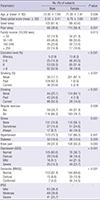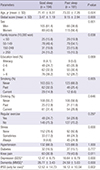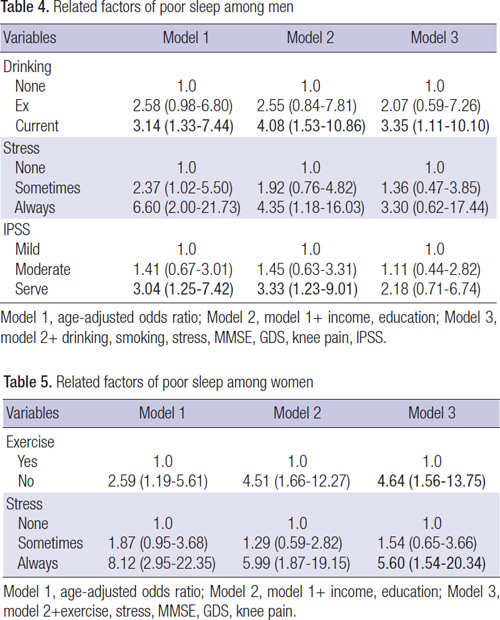1. Majde JA, Krueger JM. Links between the innate immune system and sleep. J Allergy Clin Immunol. 2005; 116:1188–1198.
2. Irwin M. Effects of sleep and sleep loss on immunity and cytokines. Brain Behav Immun. 2002; 16:503–512.
3. Faubel R, Lopez-Garcia E, Guallar-Castillón P, Balboa-Castillo T, Gutiérrez-Fisac JL, Banegas JR, Rodríguez-Artalejo F. Sleep duration and health-related quality of life among older adults: a population-based cohort in Spain. Sleep. 2009; 32:1059–1068.
4. Alvarez GG, Ayas NT. The impact of daily sleep duration on health: a review of the literature. Prog Cardiovasc Nurs. 2004; 19:56–59.
5. Ayas NT, White DP, Manson JE, Stampfer MJ, Speizer FE, Malhotra A, Hu FB. A prospective study of sleep duration and coronary heart disease in women. Arch Intern Med. 2003; 163:205–209.
6. Gottlieb DJ, Redline S, Nieto FJ, Baldwin CM, Newman AB, Resnick HE, Punjabi NM. Association of usual sleep duration with hypertension: the sleep heart health study. Sleep. 2006; 29:1009–1014.
7. Taheri S, Lin L, Austin D, Young T, Mignot E. Short sleep duration is associated with reduced leptin, elevated ghrelin, and increased body mass index. PLoS Med. 2004; 1:e62.
8. Paudel M, Taylor BC, Ancoli-Israel S, Blackwell T, Maglione JE, Stone K, Redline S, Ensrud KE. Sleep disturbances and risk of depression in older men. Sleep. 2013; 36:1033–1040.
9. Stone KL, Blackwell TL, Ancoli-Israel S, Cauley JA, Redline S, Marshall LM, Ensrud KE; Osteoporotic Fractures in Men Study Group. Sleep disturbances and risk of falls in older community-dwelling men: the outcomes of sleep disorders in older men (MrOS sleep) study. J Am Geriatr Soc. 2014; 62:299–305.
10. Neckelmann D, Mykletun A, Dahl AA. Chronic insomnia as a risk factor for developing anxiety and depression. Sleep. 2007; 30:873–880.
11. Morphy H, Dunn KM, Lewis M, Boardman HF, Croft PR. Epidemiology of insomnia: a longitudinal study in a UK population. Sleep. 2007; 30:274–280.
12. Lee YC, Chibnik LB, Lu B, Wasan AD, Edwards RR, Fossel AH, Helfgott SM, Solomon DH, Clauw DJ, Karlson EW. The relationship between disease activity, sleep, psychiatric distress and pain sensitivity in rheumatoid arthritis: a cross-sectional study. Arthritis Res Ther. 2009; 11:R160.
13. Cha SE, Eun KS. Gender difference in sleep problems: focused on time use in daily life of Korea. Soc Indic Res. 2014; 119:1447–1465.
14. Arber S. Gender, marital status and sleep problems in Britain. Przegl Lek. 2012; 69:54–60.
15. Newman AB, Spiekerman CF, Enright P, Lefkowitz D, Manolio T, Reynolds CF, Robbins J. Daytime sleepiness predicts mortality and cardiovascular disease in older adults. The Cardiovascular Health Study Research Group. J Am Geriatr Soc. 2000; 48:115–123.
16. Cappuccio FP, Stranges S, Kandala NB, Miller MA, Taggart FM, Kumari M, Ferrie JE, Shipley MJ, Brunner EJ, Marmot MG. Gender-specific associations of short sleep duration with prevalent and incident hypertension: the Whitehall II study. Hypertension. 2007; 50:693–700.
17. Oh H, Quan SA, Jeong JY, Jang SN, Lee JE, Kim DH. Waist circumference, not body mass index, is associated with renal function decline in Korean population: hallym aging study. PLoS One. 2013; 8:e59071.
18. Kim MH, Han KS, Park MS. A study on the sleep quality of the patients with temporomandibular disorders using Pittsburgh sleep quality index. J Korean Acad Oral Med. 2002; 27:89–105.
19. Jung IK, Kwak DI, Joe SH, Lee HS. A preliminary study on standardization of Korean form of geriatric depression scale(KGDS). J Korean Neuropsychiatr Assoc. 1998; 37:340–351.
20. Kang Y, Na DL, Hahn S. A validity study on the Korean mini-mental state examination (K-MMSE) in dementia patients. J Korean Neurol Assoc. 1997; 15:300–308.
21. Choi HR, Chung WS, Shim BS, Kwon SW, Hong SJ. Translation validity and reliability of I-PSS Korean version. Korean J Urol. 1996; 37:659–665.
22. Li NN. Study on physical and mental health with sleep problems of the elderly. Health Health Manag. 2014; 22:38–39.
23. Lee KE, Kim NS, Han SH. Gender difference in factors affecting quality of sleep among community dwelling elders. Int J Biosci Psychiatr Technol IJBSPT. 2015; 7:179–183.
24. Gaus SE, Strecker RE, Tate BA, Parker RA, Saper CB. Ventrolateral preoptic nucleus contains sleep-active, galaninergic neurons in multiple mammalian species. Neuroscience. 2002; 115:285–294.
25. Hofman MA, Swaab DF. The sexually dimorphic nucleus of the preoptic area in the human brain: a comparative morphometric study. J Anat. 1989; 164:55–72.
26. Crowley K. Sleep and sleep disorders in older adults. Neuropsychol Rev. 2011; 21:41–53.
27. Strygin KN. Sleep and stress. Ross Fiziol Zh Im I M Sechenova. 2011; 97:422–432.
28. Merz CJ, Wolf OT, Schweckendiek J, Klucken T, Vaitl D, Stark R. Stress differentially affects fear conditioning in men and women. Psychoneuroendocrinology. 2013; 38:2529–2541.
29. Taylor SE, Klein LC, Lewis BP, Gruenewald TL, Gurung RA, Updegraff JA. Biobehavioral responses to stress in females: tend-and-befriend, not fight-or-flight. Psychol Rev. 2000; 107:411–429.
30. Wang J, Korczykowski M, Rao H, Fan Y, Pluta J, Gur RC, McEwen BS, Detre JA. Gender difference in neural response to psychological stress. Soc Cogn Affect Neurosci. 2007; 2:227–239.
31. Ebrahim IO, Shapiro CM, Williams AJ, Fenwick PB. Alcohol and sleep I: effects on normal sleep. Alcohol Clin Exp Res. 2013; 37:539–549.
32. Hatchard T, Smith AM, Halchuk RE, Longo CA, Fried PA, Hogan MJ, Cameron I. Effects of low-level alcohol use on cognitive interference: an fMRI study in young adults. Alcohol. 2015; 49:7–13.
33. Driver HS, Taylor SR. Exercise and sleep. Sleep Med Rev. 2000; 4:387–402.
34. Kubitz KA, Landers DM, Petruzzello SJ, Han M. The effects of acute and chronic exercise on sleep. A meta-analytic review. Sports Med. 1996; 21:277–291.
35. Kline CE, Sui X, Hall MH, Youngstedt SD, Blair SN, Earnest CP, Church TS. Dose-response effects of exercise training on the subjective sleep quality of postmenopausal women: exploratory analyses of a randomised controlled trial. BMJ Open. 2012; 2:e001044.
36. Yang PY, Ho KH, Chen HC, Chien MY. Exercise training improves sleep quality in middle-aged and older adults with sleep problems: a systematic review. J Physiother. 2012; 58:157–163.
37. Awad KM, Malhotra A, Barnet JH, Quan SF, Peppard PE. Exercise is associated with a reduced incidence of sleep-disordered breathing. Am J Med. 2012; 125:485–490.
38. Tanaka Y, Kawauchi A, Watanabe H, Imada N. Relationship between nocturnal urinary frequency and sleep disturbances in aged men. Psychiatry Clin Neurosci. 1998; 52:189–190.
39. McVary KT. Sleep disturbances and lower urinary tract symptoms. Curr Urol Rep. 2011; 12:243–244.









 PDF
PDF ePub
ePub Citation
Citation Print
Print




 XML Download
XML Download